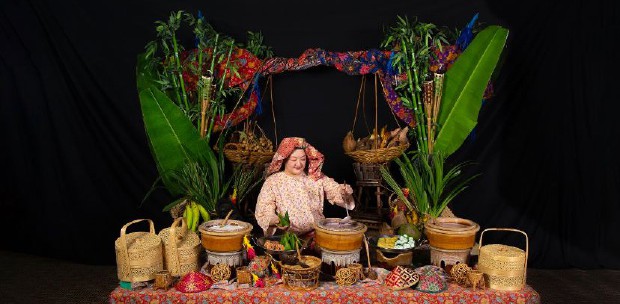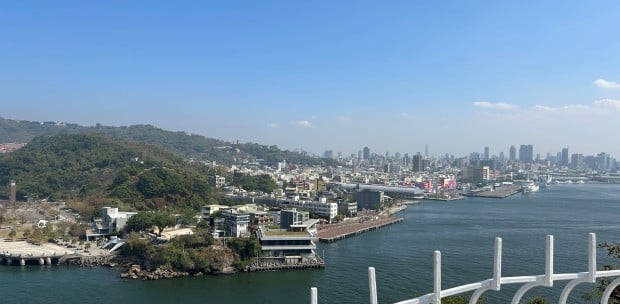Zalina Mohd Som learns the intricate and tedious process of producing a Quran during a visit to the Selangor International Islamic Arts Complex and the Nasyrul Quran
"THIS looks like a mangosteen," I utter confidently to my colleague photographer Rohanis Shukri, who is busy taking close shots of the exhibits.
"Um-hum," her voice comes out between the thick camera body and her right hand, while her left hand is fiddling with the lense.
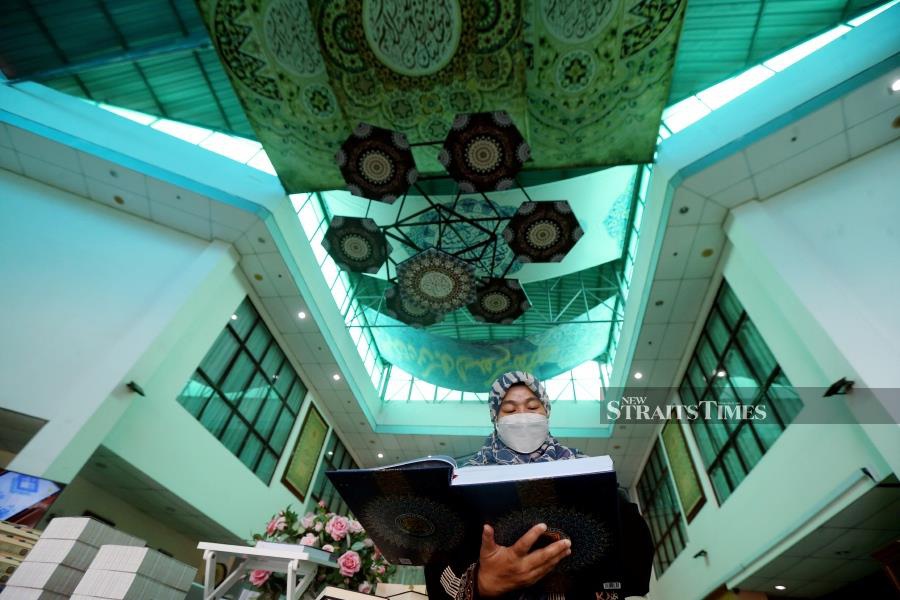
She doesn't even look at me as she has been trying to get clean shots of the subjects in the framed exhibits without any light reflection from the mirror.
The wall in front of us is covered — end to end — with a collection of art papers that, to my eyes, look like a size of A1 (60cmx85cm). Each paper has a painting drawn along its sides that leaves the rest of the sheet blank.
Against the empty, off-white papers, these paintings, that look more like borders to each sheet, stand out beautifully.
"These are the original, hand-painted zukhruf arts or illumination that are used to embellish the written pages of the Quran that we produce."
"And, yes, that is a mangosteen. You will also see other local flowers or fruits like jasmine, coconut and tamarind fruit," says Zarina Mahusin, deputy general manager of Yayasan Restu.
Zarina's reply makes Rohanis pull down her camera. She steps closer to the frame we're looking at and stares at it with a puzzled face before slowly giving her nod of acknowledgement.
She moves to the next frame and quickly announces, "I think this is a tamarind fruit."
Both of us, Rohanis and I, get so excited that we start guessing at every possible fruit or flower-looking motif in the framed zukhruf arts.
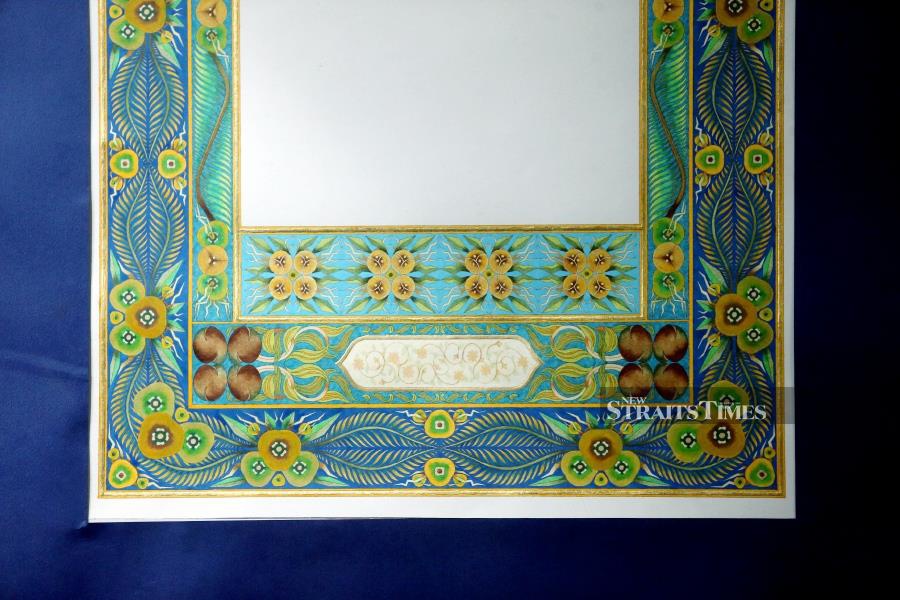
Stepping away from the fun, childlike plant-based borders, Zarina draws our attention to another section in the huge gallery of Raudhah Mushaf Malaysia Gallery in the Selangor International Islamic Art Complex in Shah Alam, Selangor.
Unlike the earlier section, this section features zukhruf art of more "serious" but intricate designs, displaying on its walls framed zukhruf arts with Quranic verses.
"These are the complete mushafs, with hand-painted zukhruf and hand-written khat calligraphy," explains Zarina.
Ahh, the ones we saw earlier were just the borders for what would be the pages for the holy Quran before khat artists work their art on the verses.
Interestingly, I could spot some familiar designs and shapes.
"I think I saw a traditional Malay buckle or pending and pucuk rebung motifs that can typically be seen on batik sarong?" I announce.
Zarina nods and explains: "We only use motifs and designs of plants — be they flowers, fruits or leaves, and patterns from traditional cultural designs and landmarks like mosques and palaces. As long as there's no element of worship."
"So, how do these mushafs or pages of the Quran become the holy book that we read at home?" I ask.

Zarina says: "There's a long process but roughly, once the zukhruflk is completed, it will be scanned and redrawn using a software, and then merged with the hand-written verses that have also been digitally touched up."
The holy book is then checked by a dedicated department to ensure that all verses are correct, before it is sent to the Home Affairs Ministry for approval.
"Only then, will it be sent for printing at our printing plant in Putrajaya," she adds.
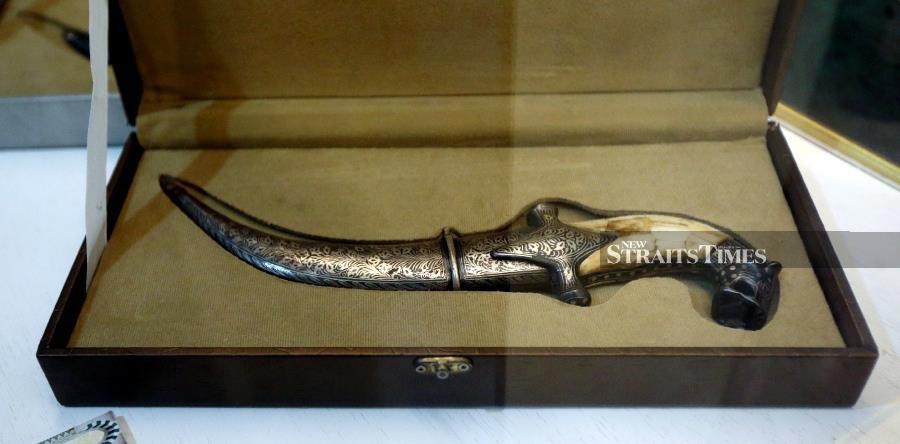
GALLERIES OF KNOWLEDGE
The Islamic art complex, which is located opposite the stunning Blue Mosque — the Sultan Salahuddin Abdul Aziz Shah Mosque, also houses two other similarly interesting galleries.
The Mahabbah Al-Haramain Gallery, located opposite the Raudhah Mushaf gallery, tells the history of the two holy cities in the Islamic world — Makkah and Madinah in Saudi Arabia.
Displayed in the gallery are old photos and artefacts related to the grand mosques in the two cities, as well as a collection of swords and knives, old coins and ancient tools.
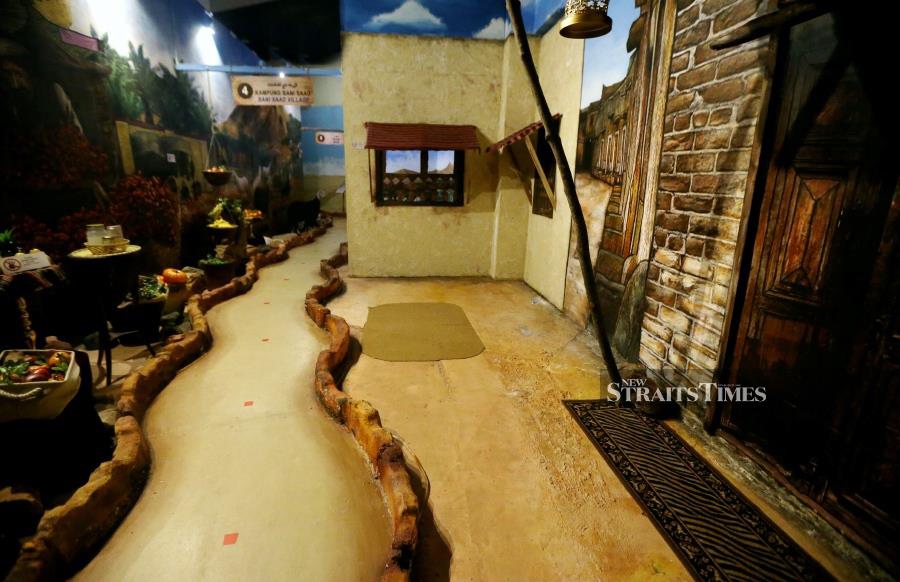
Down on the ground floor of the massive complex is the Rehlah Nabawiyyah Gallery or The Journey of Prophet Muhammad.
The two-storey gallery, as its name suggests, traces the life journey of the prophet in 21 segments, from his birth to the events that established Islam.
While his story alone is enough to make one read and focus, the fashion it's being told in makes it even more interesting.
The exhibition uses paintings and life-size dioramas and latest techniques like holograms and virtual technology.
Beside the exhibition galleries, the complex of two conjoined hexagon-shaped buildings also houses halls where daily complimentary religious classes and lectures are held, cafes, a souvenir shop and a craft shop.

Built on a 14-hectare site, the complex is managed by Yayasan Restu, a non-profit organisation formed in 1987. Its main activity is to promote Islamic arts by producing and reproducing artwork based on Islamic design motifs, which include the Quran.
Established in 1987, the foundation was the first in Malaysia to produce the holy Quran from scratch — with hand-written calligraphy and hand-painted zukhruf, to print the final product.
While the complex becomes a venue to display its products and exhibit the background of the Quran, it is also where the foundation does its pre-production from research to manual design and digital works.
"So, to have a whole picture of Quran publishing, we highly recommend you pair your visit here with our printing plant, Nasyrul Quran in Putrajaya," suggests Zarina.
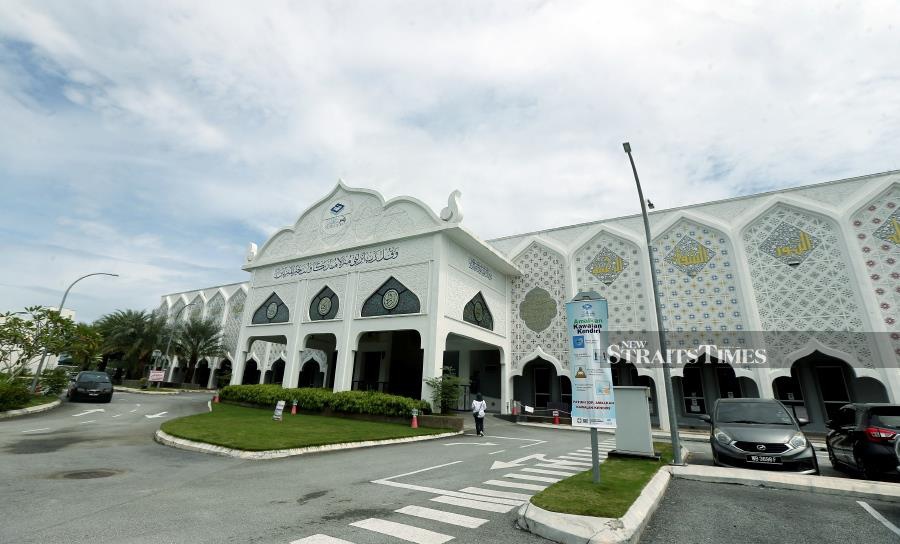
MORE GALLERIES
The 45-minute drive from Selangor International Islamic Arts Complex takes us to the grand white building of Nasyrul Quran at Precinct 14 in Putrajaya.
Its facade is adorned with intricate wood-carving motifs that we normally see on traditional Malay woodcraft, interspersed with beautiful Arabic khat arts.
I try as much as I can to ignore the fact that the weathered buildings that we just came from pale in comparison with this grand building that stands before my eyes.
My jaw drops at the sight of a huge golden chandelier with typical Islamic geometric designs and a floor-to-ceiling mushaf art made of colourful mosaics as soon as I step into the vast, high-ceiling lobby. Yes, Nasyrul Quran definitely scores high points and perhaps, its older sister — the art complex— should be given a facelift to make it equally appealing.
We arrive just in time to join an open visit which we later learn is regularly organised at specific time slots. Together with us are two small groups of families and we are led by an in-house guide.
The public tour runs smoothly on a standard itinerary that starts from the ground floor's gallery before heading up to the upper floors for two more galleries, and ending at a viewing gallery that has an unobstructed view of the whole printing plant.
Like the Shah Alam complex, there are three galleries here too — the Gallery of Al Quran Manuscript Malaysia, the Gallery of Mushaf International and the Gallery of Interior Design and Islamic Architecture.
While the first two bear similarity to the mushafgallery in Shah Alam, the Gallery of Interior Design and Islamic Architecture is a breath of fresh air.
The exhibits, especially the colourful mosaics, will definitely appeal to architecture and interior design lovers.
But personally, the highlight of our visit to Nasyrul Quran is the time Rohanis and I spend at the viewing gallery, watching the workers go about their tasks at the superclean printing plant.
The excitement goes up another notch when our guide tells us that Nasyrul Quran is the world's second-largest Quran production centre, after the King Fahd Complex in Madinah.
To mark the end of our 40-minute tour, our guide hands each of us a small booklet of a complete Surah Yaseen and accompanying prayers.
The little book is not enough, so we head to the souvenir shop to do more shopping. Well, after learning the intricate and tedious process of producing a Quran, we cannot resist buying one for ourselves.
FAST FACTS
SELANGOR INTERNATIONAL ISLAMIC ARTS COMPLEX
2A, Persiaran Damai Section 10, 40100 Shah Alam Selangor
TEL 03-5511 9001/2/3
FAX 03-5512 3780
EMAIL [email protected]
WEBSITE yayasanrestu.com
NASYRUL QURAN
14811, Jalan P14J Precinct 14, 62675 Putrajaya
TEL 012-919 3095
WEBSITE www.nasyrulquran.com/


